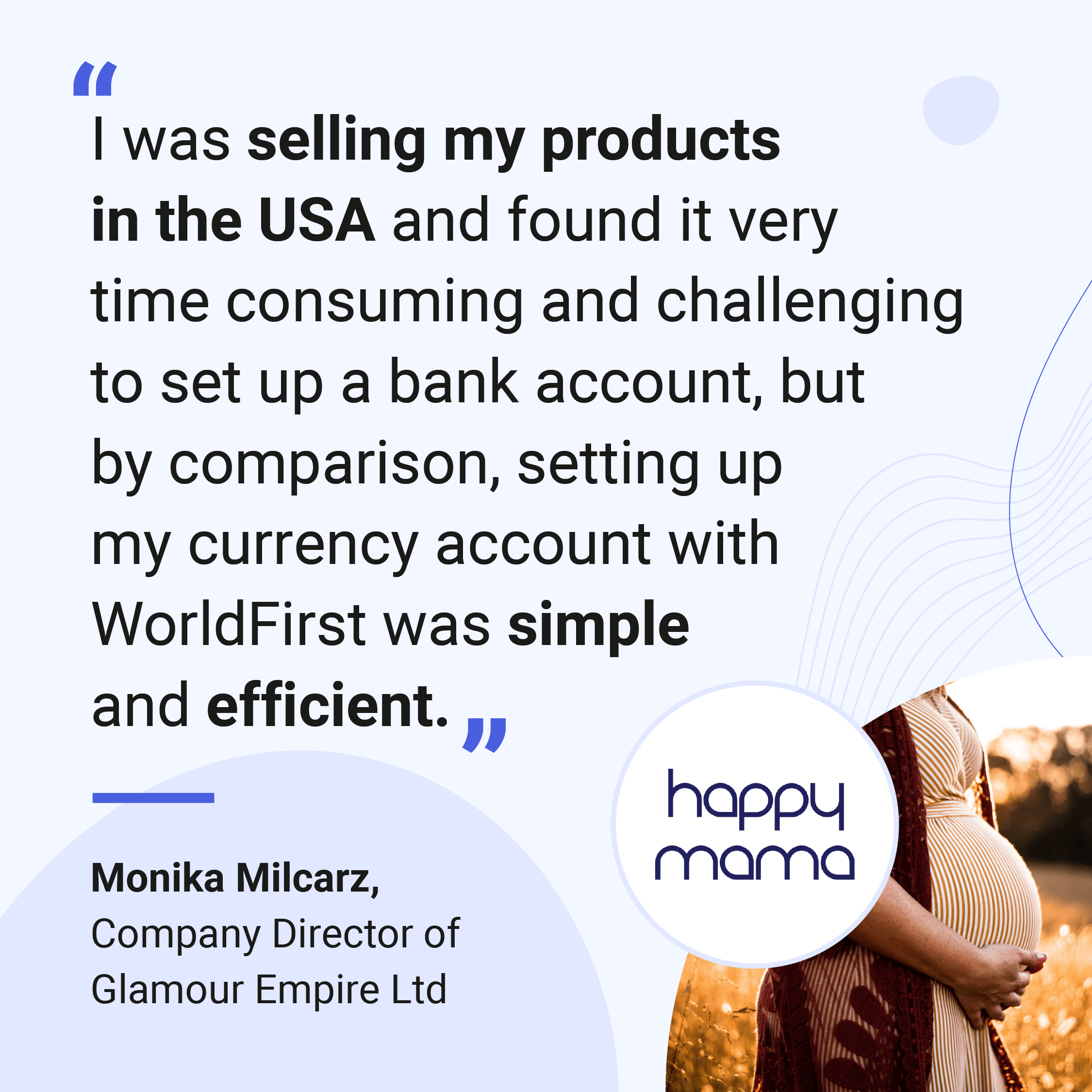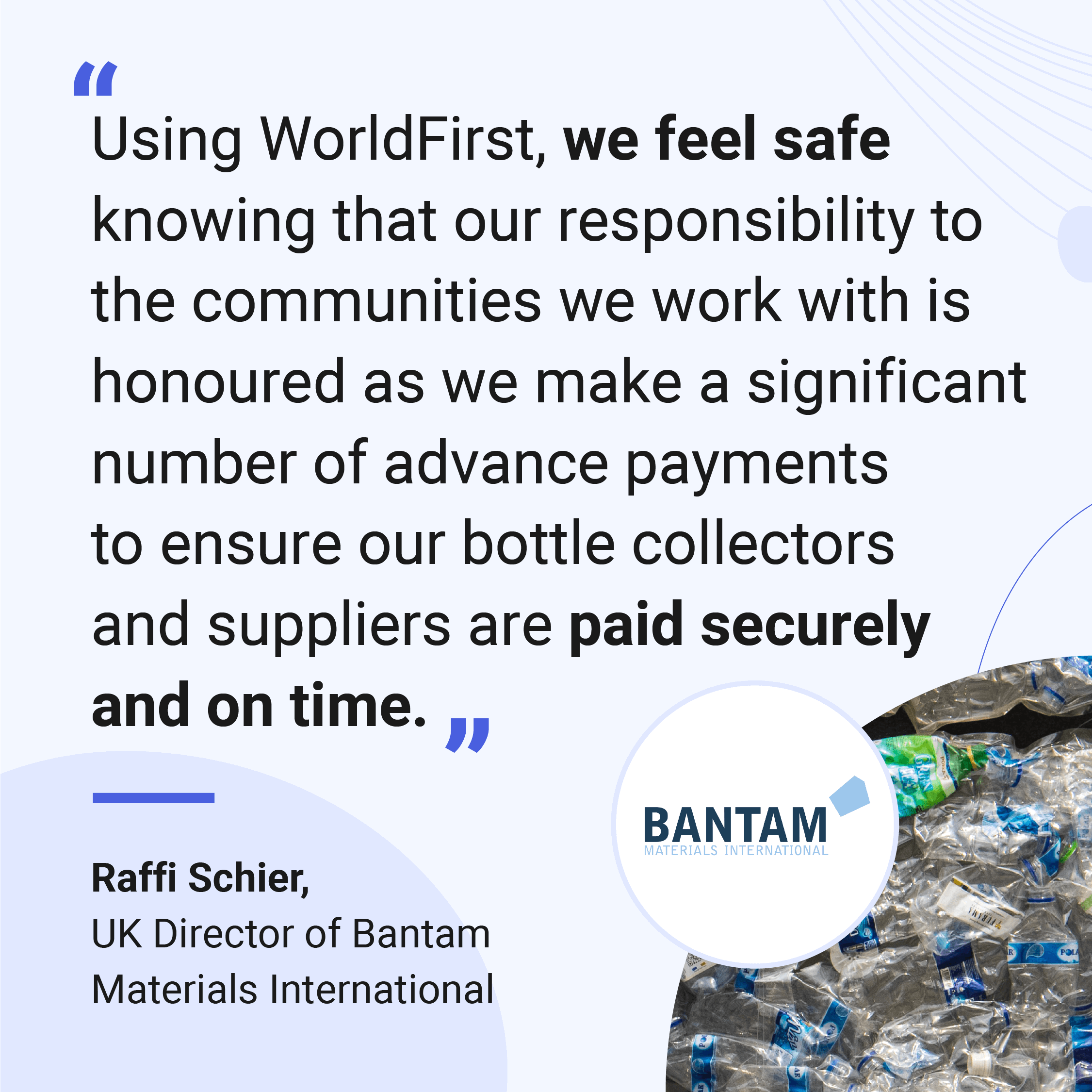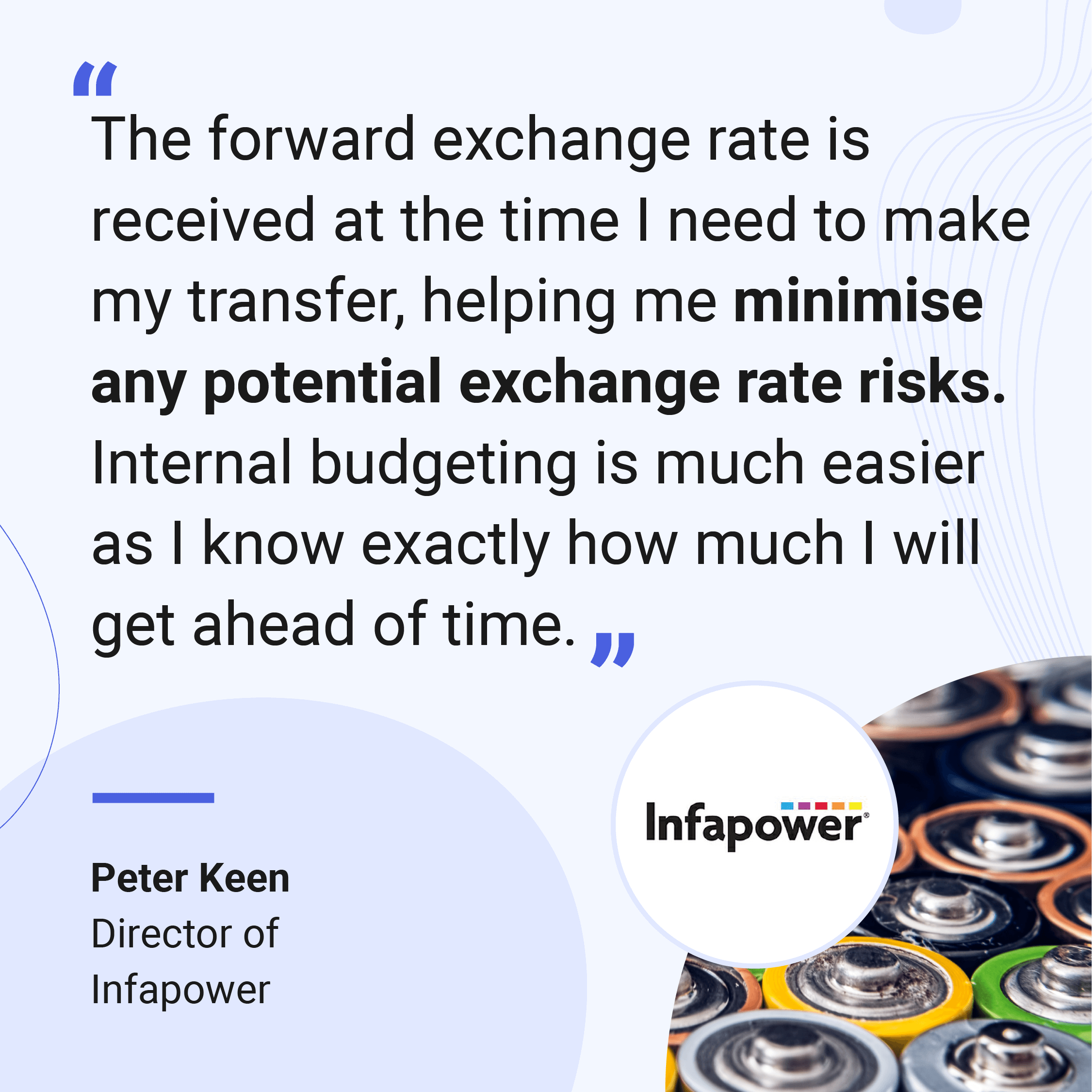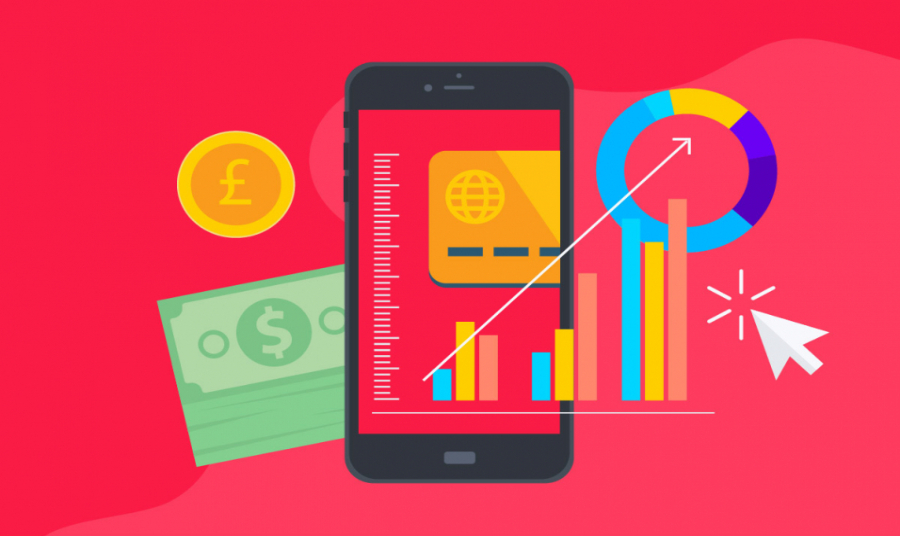
Finding the right cross-border payment solution
If you buy or sell products and services internationally, optimising your payment process is important if you want to avoid costly delays and fees. Here’s a guide to the various types of cross-border payment methods available, helping you determine the best fit for your business.
Banks
Bank wire transfers for cross-border payments are a traditional method, offering the convenience of online banking. But, they can be slow and expensive. Banks typically charge fees for international transfers, which can accumulate if you’re making these payments frequently. In addition, transfers can take up to five days, causing potential cash flow issues.
Foreign exchange services
Foreign exchange (FX) services are often a faster and more cost-effective option compared to banks, especially for large transfers. These services usually offer lower fees, making them perfect for businesses wanting to optimise their international payment processes.
Credit or debit cards
Using a credit or debit card for international payments is straightforward but incurs fees. Credit card fees tend to be higher than those for bank transfers or debit cards. However, one benefit is that you can dispute transactions and charge it back to the seller if issues come up, providing an extra layer of security.
Payment processing services
Payment service providers (PSPs) play a critical role in the payment ecosystem, allowing you to receive cross-border payments via various methods such as debit cards, credit cards and direct debit. PSPs manage the entire payment process and help businesses expand their customer base by accepting as many payment types as possible. Popular PSPs include PayPal, Shopify, Stripe and Zettle, each offering unique features better suited to certain businesses.
Receiving cross-border payments
B2B payments
For B2B transactions, business customers may prefer to make payments directly into your business bank account. While this can be done through their bank, using a company like WorldFirst can be faster and more efficient. With a World Account, you can open local currency accounts, making it easier for your customers to pay you.
To receive cross-border wire transfers to your business bank account, you'll need to provide your customers with the following details:
- Your company’s name and address
- Your bank’s name and address
- SWIFT code or Bank Identifier Code (BIC)
- International Bank Account Number (IBAN) or account number
Keep in mind that banks may charge fees for incoming money from overseas accounts, so factor this cost into your pricing strategy. With the World Account, it’s free to receive payments.
Open a World Account for free
- Open up to 15 local currency accounts, with local sort codes, account numbers and IBANs
- Collect secure payments from 130+ marketplaces, overseas buyers and payment processing gateways
- Pay suppliers, partners and staff in 40 currencies without hidden fees
- Pay and get paid easily with local bank details on your invoices
- Lock in conversion rates to manage your currency risk
E-Commerce payments
For e-commerce businesses, getting your cross-border payments right is integral to delivering excellent international customer service. It’s also important to comply with cross-border payment regulations in the countries you operate in, ensuring data protection and customer security.
For B2C transactions, the payment process should be as seamless as domestic payments from the customer’s perspective. Displaying prices in local currencies can prevent unpleasant surprises at checkout. While receiving payments directly into one central business bank account incurs fees, setting up local bank accounts in each country for each currency can be time-consuming. An effective alternative is using a multi-currency account like the World Account, which partners with major marketplaces like Amazon, eBay, and Etsy to streamline cross-border transactions.
Making cross-border payments
When making cross-border payments, you’ll want to consider the cost of fees and the exchange rate to choose the most cost-effective method. Some providers may offer no-fee payments but provide poor exchange rates for the amount you want to send. For high-value transactions, checking real-time exchange rates across multiple providers can ensure you don’t lose significant money during the transfer.
If your overseas suppliers charge in your local currency, you can avoid foreign exchange fees yourself, but the supplier may have added a margin to their price. The process will be similar to domestic purchases. Always check the supplier’s prices in their home currency to see if it’s more cost-effective to pay in their currency.
Streamlining payments with WorldFirst
WorldFirst simplifies sending foreign payments and entering new markets with a World Account. With this account, you can:
- Pay domestic and international suppliers, partners and staff in multiple currencies
- Send up to 200 international and domestic payments in a single transaction
- Connect with Xero and NetSuite to reduce accounting administration and reconciliation
- Lock in conversion rates to manage currency risk
- Collect secure payments from over 100 global marketplaces
- Get paid easily by overseas buyers with local bank details on your invoices
- Bring your money home at favorable rates when it suits you
Navigating cross-border payments effectively is crucial for any business engaged in international trade. By understanding different payment options and using services like WorldFirst, you can improve your payment processes, save on fees and enhance your overall business efficiency. Find out more by getting in touch with the WorldFirst team on 020 7801 1065.

Businesses like yours trust WorldFirst
- Almost 1,000,000 businesses have sent $150B around the world with WorldFirst and its partner brands since 2004
- Your money is safeguarded with leading financial institutions
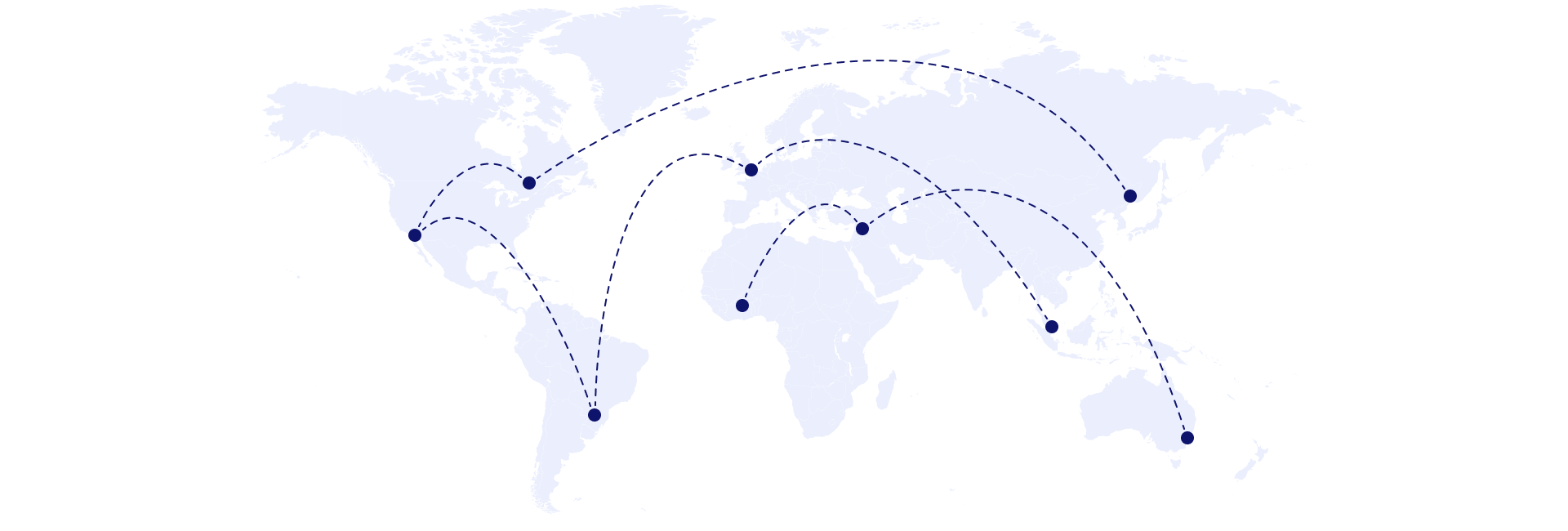
What our customers say about our services
